1. Overview
Noriaki Okabe (岡部 憲明Okabe NoriakiJapanese, born December 9, 1947) is a distinguished Japanese architect whose career spans over five decades, marked by significant contributions to both architecture and industrial design. Born in Shizuoka Prefecture, Okabe's early international experience deeply influenced his approach, particularly his two-decade-long collaboration with renowned Italian architect Renzo Piano in Europe, which began with the iconic Centre Georges Pompidou in Paris. This collaboration laid the groundwork for his future large-scale, socially impactful projects.
Okabe's work is characterized by a commitment to public spaces and functional design that enhances the user experience. His most notable architectural achievements include the design and construction supervision of the Kansai International Airport Terminal Building, a crucial international gateway. Beyond buildings, he has made a profound impact on public transport through his innovative industrial design for various Odakyu Romancecar series trains (VSE, MSE, EXEα, GSE) and the Hakone Tozan Railway Allegra. These designs prioritize passenger comfort and aesthetic appeal, contributing positively to daily life for countless commuters and travelers. Following his extensive collaboration with Piano, Okabe established his independent practice, Noriaki Okabe Architecture Network, in 1995. He has also dedicated himself to academia as a professor at Kobe Design University, where he earned his doctorate, further influencing future generations of designers to consider the social dimension of their work. His career reflects a focus on integrating design with societal needs, making significant contributions to infrastructure and public spaces.
2. Early Life and Education
Noriaki Okabe's foundational years provided the groundwork for his architectural journey, from his upbringing in Japan to his initial ventures into the international architectural scene.
2.1. Childhood and Academic Background
Noriaki Okabe was born in 1947 in Fujinomiya, Shizuoka Prefecture, Japan. His early education included attending Tokyo Metropolitan Ryogoku High School. He then pursued higher education at Waseda University, graduating from the Department of Architecture within the Faculty of Science and Engineering in 1971. Following his graduation, he gained initial professional experience working at Yamashita Sekkei, a prominent architectural firm.
2.2. Early International Experience
In 1972, Okabe embarked on a significant international journey, moving to France as a recipient of a French government scholarship, which lasted until 1973. This period marked the beginning of his influential collaboration with the celebrated Italian architect Renzo Piano. Working alongside Piano in both France and Italy, Okabe gained invaluable experience in diverse architectural contexts. His dedication and expertise in France were recognized when he became a French government-certified architect in 1986, a testament to his strong foundation and early achievements in the European architectural landscape.
3. Career
Noriaki Okabe's career trajectory showcases a continuous evolution from a key collaborator with a renowned international architect to an independent master of his craft, extending his influence into both architectural and industrial design, alongside significant academic contributions.
3.1. Collaboration with Renzo Piano
Okabe's career took a decisive turn with his extensive two-decade-long collaboration with Renzo Piano. This partnership began in 1974 when he joined the design team for the groundbreaking Centre Georges Pompidou in Paris, a project that redefined modern museum architecture with its visible structural and mechanical systems. The Centre Pompidou became a vibrant public cultural space, reflecting an innovative approach to urban integration.
In 1977, Okabe co-founded Piano + Rice Associati, further solidifying his partnership with Piano. By 1981, he was appointed Chief Architect at Renzo Piano Building Workshop (RPBW) in Paris, where he played a pivotal role in various international projects. His collaboration culminated in his appointment as the representative director of Renzo Piano Building Workshop Japan in 1988, a position he held until 1994. During this period, Okabe led the design and construction supervision of the Kansai International Airport Terminal Building, a monumental project that won an international competition. The Terminal Building, completed in 1994, is recognized globally for its innovative structure and efficient flow, serving millions of passengers annually as a critical piece of public infrastructure. A model of the building's main structural truss is notably held in the Museum of Modern Art's Architecture and Design department.
3.2. Founding Noriaki Okabe Architecture Network
After his significant tenure with Renzo Piano Building Workshop Japan, Okabe established his independent practice, Noriaki Okabe Architecture Network, in Tokyo in 1995. This marked the beginning of a new chapter where he expanded his architectural work into the field of industrial design, notably contributing to public transportation. His independent work also included international collaborations, such as the design of the Belgian Embassy in Tokyo in 2009, where he collaborated with Belgian architect Jean-Michel Jaspers and landscape architect Aldrik Heirman.
3.3. Academic Contributions
Alongside his professional practice, Noriaki Okabe has made substantial contributions to architectural education. In 1998, he was appointed a professor at Kobe Design University. His academic endeavors culminated in 2007 when he earned a Doctorate in Engineering from Kobe Design University, further cementing his expertise and influence in both practical and theoretical aspects of design. As a professor, he has undoubtedly guided and inspired many aspiring architects, emphasizing the importance of innovative and socially conscious design.
4. Major Works
Noriaki Okabe's portfolio encompasses a diverse range of projects, from large-scale public buildings and infrastructure to innovative industrial designs, showcasing his versatility and commitment to enhancing public spaces and experiences.
4.1. Architectural Projects
Okabe's architectural projects are often characterized by their structural innovation, functional efficiency, and contribution to public utility.
- Kansai International Airport Terminal Building (1994, Osaka): This seminal work, designed under Renzo Piano Building Workshop Japan, is a landmark in airport architecture. Okabe was responsible for its design and construction supervision, ensuring the creation of a vast, efficient, and user-friendly gateway for international travel. The building's advanced structural engineering and light-filled spaces contribute to a positive experience for the traveling public.
- Ushibuka Haiya Bridge (1997, Amakusa, Kumamoto Prefecture): This bridge is not only an important piece of infrastructure connecting communities but also an example of architectural elegance integrated into its natural surroundings. It was recognized as a participant in the Kumamoto Artpolis project.
- Valeo Unisia Transmissions Atsugi factory (2000, Atsugi, Kanagawa Prefecture): This industrial facility demonstrates Okabe's ability to apply sophisticated design principles to functional industrial architecture, optimizing workflow and creating a conducive environment for manufacturing.
- Housing in Sakura-shinmachi (2002, Setagaya, Tokyo): This project showcases his work in residential architecture, focusing on creating harmonious living spaces within an urban context.
- Ichinomiya Town Agricultural/Forestry/Fishery Product Processing Facility & Direct Sales Office "Shikisai" (2003, Aso, Kumamoto Prefecture): This facility, also part of the Kumamoto Artpolis initiative, supports local industries and provides a direct interface for consumers, blending agricultural function with community space.
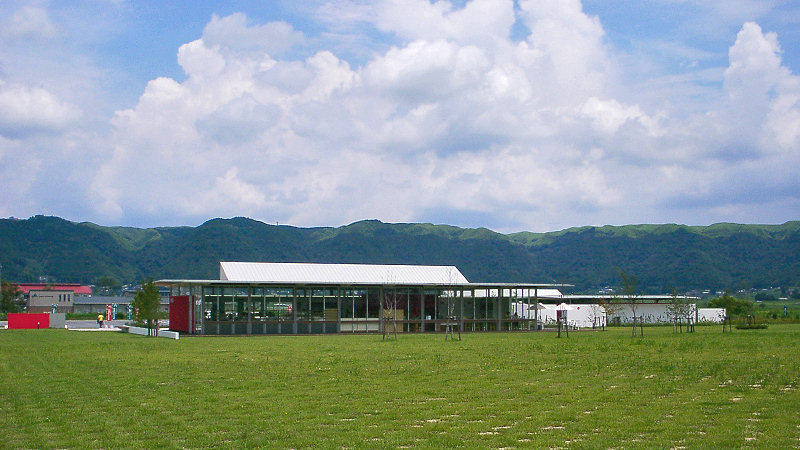
- Belgian Embassy (2009, Tokyo, Japan): A collaborative effort that reflects international architectural dialogue, providing a dignified and functional space for diplomatic relations.
- COLONY Hakone (2017, Hakone, Kanagawa Prefecture): This project likely integrates hospitality or residential functions with the natural beauty of the Hakone region.
4.2. Industrial Design
Noriaki Okabe is particularly renowned for his industrial designs, especially his contributions to train design, which have significantly enhanced the aesthetic and functional aspects of public transportation in Japan.
- Odakyu Romancecar 50000 series VSE (2004): This train pioneered a new era for Odakyu's limited express services with its distinctive elevated driver's cab and observation decks, offering panoramic views. It received the Good Design Award in 2005 and the Blue Ribbon Award in 2005 from the Japan Railfan Club. The VSE provided a luxurious and engaging travel experience for the public before its regular service ended in 2022, with full retirement in 2023.
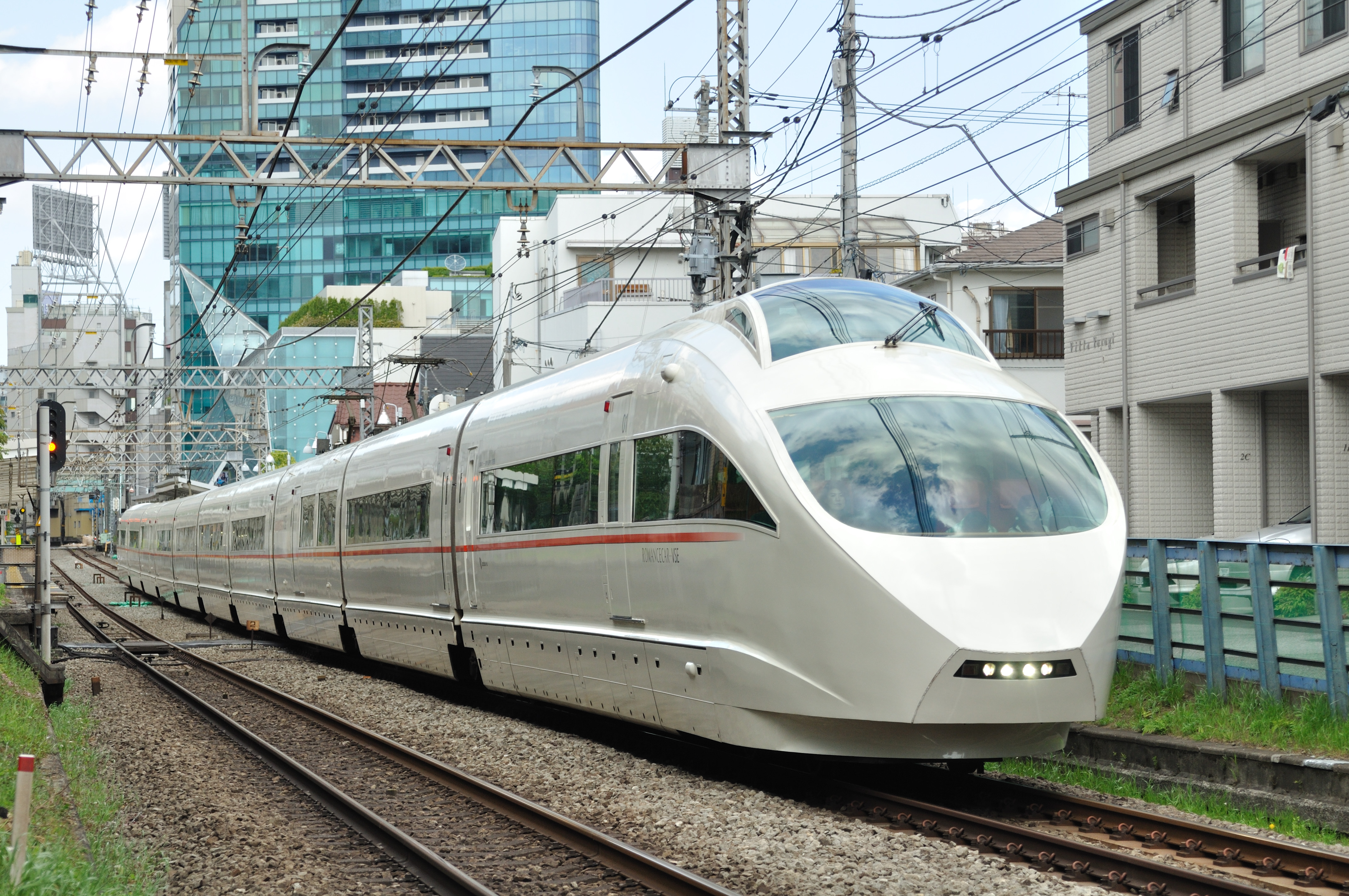
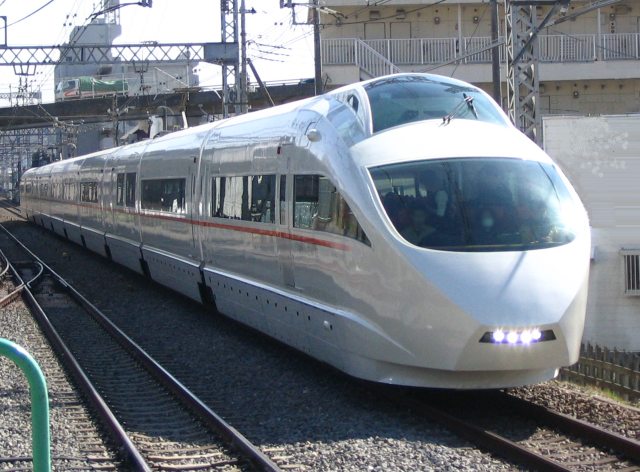
- Odakyu Romancecar 60000 series MSE (2007): Designed for both limited express and through-service on subways, the MSE features a more versatile design capable of operating on multiple lines. It was awarded the Good Design Award in 2008 and the Blue Ribbon Award in 2008, reflecting its success in adapting luxurious features to urban commuting and longer-distance travel.
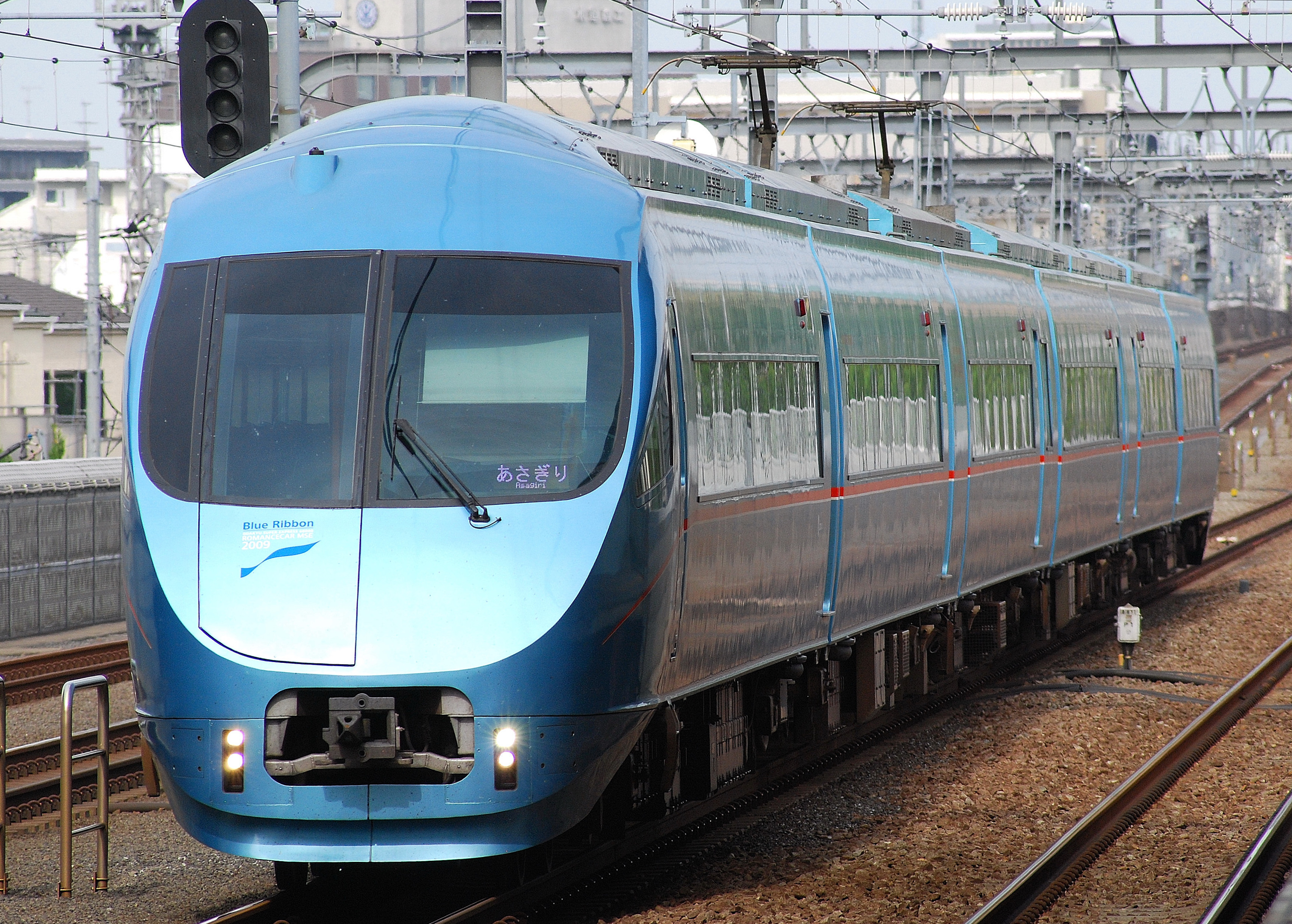
- Hakone Tozan Railway 3000 series "Allegra" (2014): This train, designed for the steep gradients of the Hakone Tozan Line, features large windows that immerse passengers in the scenic landscape, enhancing the tourist experience.
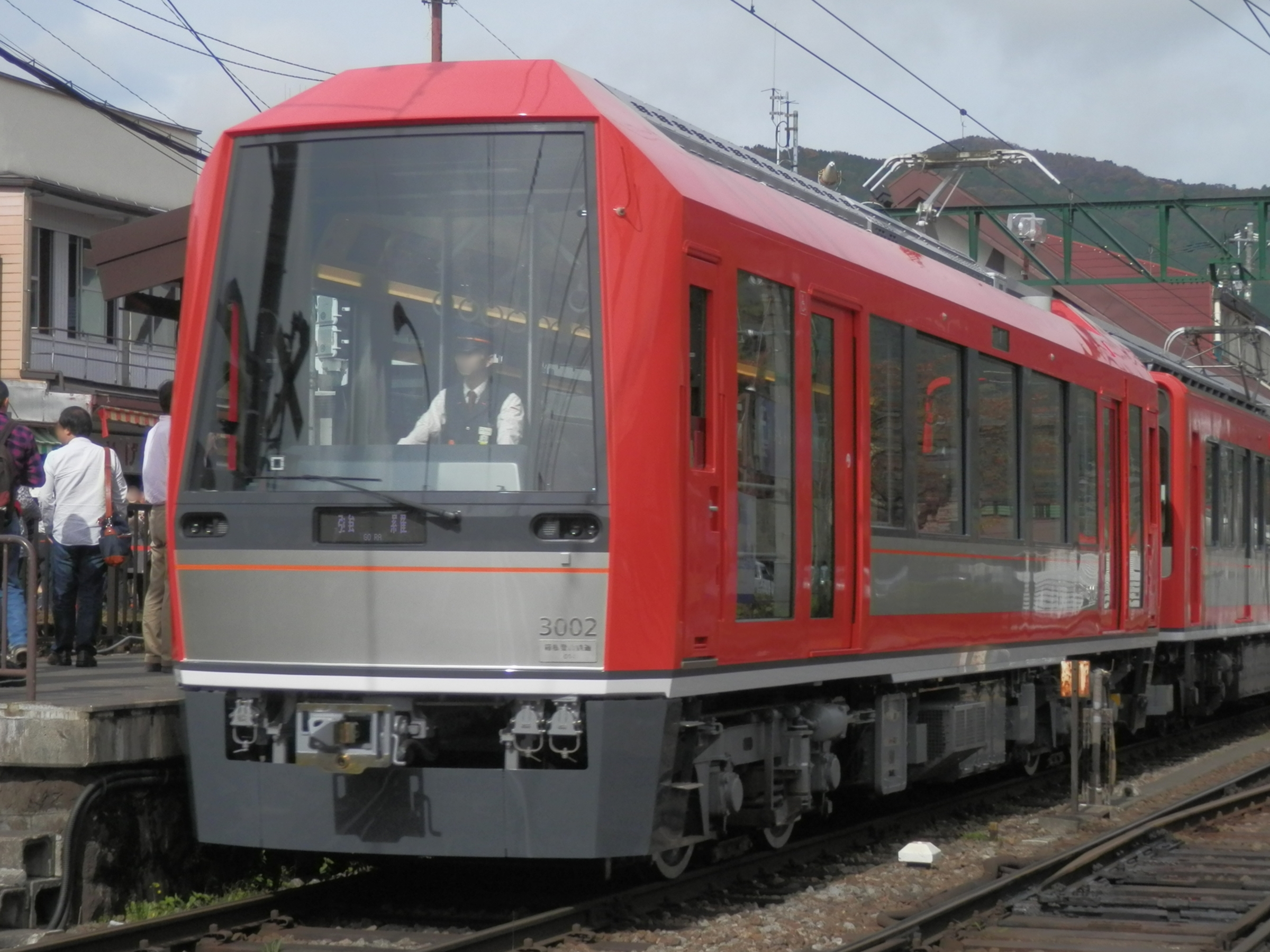
- Oyama Kanko Dentetsu Oyama Cable Car new vehicle (2015): Demonstrating his versatility, Okabe also designed the new vehicles for this cable car line, crucial for accessing Mount Oyama and its pilgrimage sites, further enhancing public access to natural and cultural heritage.
- Odakyu Romancecar 30000 series EXEα (2017): This was a refurbishment program for the existing EXE series trains, updating their interiors and exteriors to align with the modern Romancecar fleet, improving comfort and aesthetics for passengers.
- Odakyu Romancecar 70000 series GSE (2018): The Grand Super Express (GSE) continued the tradition of providing an exceptional travel experience with large, continuous windows and comfortable seating. It received the Good Design Award in 2018 and the Blue Ribbon Award in 2018, emphasizing its contribution to the passenger experience on Odakyu's express routes.
5. Awards and Honors
Noriaki Okabe's significant contributions to architecture and design have been widely recognized through numerous prestigious awards and honors throughout his career.
- 1985: EQUERRE D'ARGENT SPECIAL MENTION for the Schlumberger company renovation project.
- 1995: Nikkei BP Technology Award Grand Prize for the design and construction technology of the Kansai International Airport artificial island and passenger terminal building.
- 1995: Architectural Institute of Japan Prize for the Kansai International Airport Passenger Terminal Building.
- 1998: Japan Society of Civil Engineers Tanaka Award.
- 2001: Japan Society of Civil Engineers Design Award Grand Prize for the Ushibuka Haiya Bridge.
- 2002: BCS Prize for the Valeo Unisia Transmissions Atsugi factory.
- 2005: Good Design Award for the Odakyu 50000 series VSE train.
- 2005: Blue Ribbon Award (49th) from the Japan Railfan Club for the Odakyu 50000 series VSE train.
- 2008: Good Design Award for the Odakyu 60000 series MSE train.
- 2008: Blue Ribbon Award (52nd) from the Japan Railfan Club for the Odakyu 60000 series MSE train.
- 2018: Good Design Award for the Odakyu 70000 series GSE train.
- 2018: Blue Ribbon Award (62nd) from the Japan Railfan Club for the Odakyu 70000 series GSE train.
6. Writings
Noriaki Okabe has authored and contributed to several publications, sharing his insights on architecture, design, and his experiences.
- Kansai International Airport Passenger Terminal Building (関西国際空港旅客ターミナルビルKansai Kokusai Kūkō Ryokaku Tāminaru BiruJapanese) with Renzo Piano Building Workshop (Kodansha, 1994). This book details the design and construction of one of his most significant public infrastructure projects.
- Fragments of the Eiffel Tower - An Architect's Journey (エッフェル塔のかけら-建築家の旅Efferu Tō no Kakera - Kenchikuka no TabiJapanese) (Kinokuniya Shoten, 1997). This work offers a personal reflection on his architectural explorations.
- Architecture of Possibility - Thinking about Humans and Space (可能性の建築-人間と空間を考える(NHK人間講座)Kanōsei no Kenchiku - Ningen to Kūkan o Kangaeru (NHK Ningen Kōza)Japanese) (NHK Publishing, 2004). This publication, based on an NHK lecture series, explores his philosophy on architecture's role in relation to human experience and space.
- Architecture of Possibility - The Future of Architecture Created by Space, Time, and Architecture (可能性の建築-空間・時間・建築が創る建築の未来(NHKライブラリー)Kanōsei no Kenchiku - Kūkan Jikan Kenchiku ga Tsukuru Kenchiku no Mirai (NHK Library)Japanese) (NHK Publishing, 2005). An expanded version of the previous work, delving deeper into the interplay of space, time, and architectural creation.
- Paris - Kikukawa Professional Guide Vol.2/1994 (パリ -キクカワ プロフェッショナル ガイド Vol.2/1994Pari - Kikukawa Purofesshonaru Gaido Vol.2/1994Japanese) (Kenchiku Toshi Workshop, 1994). A guide focusing on architectural aspects of Paris.
- The Dream of an Engineer: Peter Rice's Autobiography (ピーター・ライス自伝-あるエンジニアの夢みたことPītā Raisu Jiden - Aru Enjinia no Yumemita KotoJapanese) (Kashima Shuppankai, 1997). Okabe supervised the translation of this autobiography by Peter Rice, an influential structural engineer, reflecting his interest in the collaborative aspects of design.
7. Personal Life
Noriaki Okabe is married to Aomi Okabe, an acclaimed art historian and curator.
8. Legacy and Influence
Noriaki Okabe's legacy in the fields of architecture and industrial design is profound, marked by his innovative approach to large-scale public projects and his commitment to creating designs that serve and enrich society. His long collaboration with Renzo Piano provided a foundation in designing complex, high-profile public spaces, from the groundbreaking Centre Georges Pompidou to the expansive Kansai International Airport Terminal Building. These works demonstrate his ability to manage intricate projects that balance aesthetic ambition with functional necessity, profoundly impacting public experience and global connectivity.
Beyond traditional architecture, Okabe's ventures into industrial design, particularly his iconic train designs for the Odakyu Romancecar series, have redefined the passenger experience in public transportation. By integrating comfort, advanced technology, and distinctive aesthetics, he has elevated daily commutes and leisure travel into more enjoyable and memorable journeys for the general public. These designs have not only garnered numerous awards but also set new standards for user-centric public transit design in Japan and beyond.
As a professor at Kobe Design University and a Doctor of Engineering, Okabe has played a crucial role in shaping the next generation of designers. His academic contributions, coupled with his extensive practical experience, ensure that his philosophy of socially responsible and user-focused design continues to influence architectural discourse and practice. Okabe's work consistently highlights the critical role of design in improving quality of life, demonstrating how well-conceived architecture and industrial design can be powerful tools for societal progress and the creation of more humane and efficient public environments.
[http://www.archinet.jp/ Noriaki Okabe Architecture Network official site]